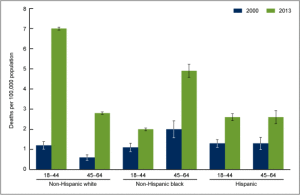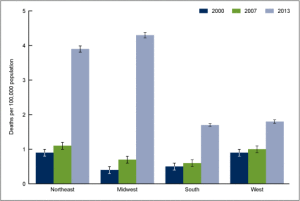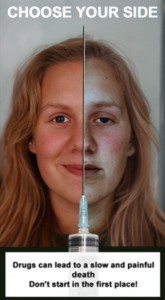Was Japan just in their decision to scrap Zaha Hadid’s competition winning design?
John Carino
In the world of architecture, sometimes the decision to build comes down to money. Money drives everything, and often it unnecessarily complicates situations. In the case of Japan’s scrapping of Zaha Hadid’s 2020 Olympic Stadium design it seems money have not been the main reason despite their claim.
When Japan’s Prime Minister Shinzo Abe scrapped British-Iraqi architect Zaha Hadid’s design for the 2020 Tokyo Olympic stadium, it was due to claims of spiraling material costs. While rising construction costs is an existing problem, Zaha Hadid and her architects argue the reasons behind the Tokyo government dropping her design were illegitimate and go beyond just the rise of financial issues.
In 2012 Zaha Hadid Architects won an international competition with their design for an 80,000 seat stadium that would be used for the 2019 Rugby World Cup, the 2020 Tokyo Olympic Games, and would exist as the home for Japanese sports for the next century.
Zaha Hadid’s world famous works include the 2012 Aquatics Centre for London’s Olympic Games as well as the in-progress production of the 2022 stadium for the football World Cup in Qatar.
For the 2020 Olympic Stadium project, Hadid produced a “streamlined design with two gigantic arches, resembling a cyclist’s helmet” (Kyodo). Hadid is known for her futuristic and progressive designs, and, this design in particular started to turn heads, but not necessarily for the right reasons.
Zaha Hadid’s design for the stadium began receiving heavy criticism from famous Japanese architects as soon as it won the international competition. These high profile Japanese architects include Toyo Ito, Sou Fujimoto, Kengo Kuma, as well as Fumihiko Maki. Between these architects there was mutual agreement that her structure was too large and expensive, they also stated that Hadid did not understand the building site’s context, which also upset the site’s community.
The local community of the stadium site held a 500-person protest in outrage against the design. Along with believing the costs were too high, these architects and community members believed her hyper-modern futuristic design did not integrate well into its surroundings. While a hyper-modern design may seem appropriate to send a message to the world about Japans forward-thinking and technological advances, they felt it did not appropriately reflect cultural Japanese values and would inappropriately stand out in their community.
Her design disappointed more than just Japanese architects. Barcelona’s Olympic Stadium architect Arata Isozki called her project “a monumental mistake” (Japan). He claimed it left him “in despair”(Japan) and saw it as a “disgrace to future generations” (Japan). Zaha Hadid was shocked and disappointed in her treatment surrounding the project, especially when they dropped her design to host a new design competition so late into the design process.
Zaha Hadid had a different perspective of why her design was scrapped. She claimed, “This shocking treatment of an international design and engineering team, as well as the respected Japanese design companies with whom we worked, was not about design or budget” (Press).
Hadid stated they just did not want a foreigner designing their national stadium. She called the Japanese architects who criticized her hypocrites, because they had all worked abroad themselves. She even stated “The fact that they lost is their problem, they lost the competition. If they are against the idea of doing a stadium on that site, I don’t think they should have entered the competition” (Japan).
“Due to 25 percent rise in costs across Tokyo’s construction market, the authorities used costs as an excuse to swap for a Japanese architect”(Press)
In response to the claims of a steep annual increase in construction costs Hadid responded “It is not the case that the recently reported cost increases are due to the design, which uses standard materials and techniques well within the capability of Japanese contractors and meets the budget set by the Japan Sports Council” (Japan). She claimed the increased cost of her project was a result of rising construction costs, not due to her design. Hadid argued by scrapping her design, they were setting them up for an entirely new set of problems and costs.
“It is disappointing that the government did not even consider working with the existing design team to build on the two years of design work they and the Japanese people had invested”(Wainwright). – Spokesperson for Zaha Hadid architects
This video rendering that expresses the extensive work Zaha Hadid and her team had already placed into the project.
Hadid argued that the Japanese government did not even attempt to work with her to revise her design. She claims they could have made it work, arguing that all of these delays that the government caused may make the stadium not ready for the Rugby World Cup and possibly even the Olympics, including an extended construction deadline which increases costs significantly after such a long construction delay. Hadid claimed her project construction would have already been in progress.
“Work would already be underway building the stadium if the original design team had simply been able to develop this original design, avoiding costs of an 18-month delay and risk that it may not be ready in time for the 2020 Games” (Press).
In July of 2015 Japan hosted a new design competition to pick a project to replace Hadid’s. Hadid’s argument seems to gain validity as the winner of the new design competition was Japanese architect Kengo Kuma, one of the architects that had previously criticized Hadid. Outrage continues to be drawn as his design had striking resemblance to Hadid’s design in plan and circulatory design aspects.
Zaha Hadid began to suspect collusion by the Japanese government as it seems their reasons for scrapping her design continue to become more illegitimate with its new developments, claiming: “sadly the Japanese authorities, with the support of some of our own profession in Japan, have colluded to close the doors on the project to the world” (Zaha Hadid accuses).
Hadid claimed Kengo Kuma’s replacement design has “remarkable similarities to her own” (Zaha Hadid accuses). She argued that they are very similar in shape and layout. She even asserted, “in fact much of our two years of detailed design work and the cost savings we recommended have been validated by the remarkable similarities of our original detailed stadium layout and our seating bowl configuration with those of the design announced today”(Press). Kuma responded to these accusations claiming, “In the design, I would like to say there are no similarities at all” (McCurry)
While Kuma’s design had a cost estimate of $1.4 billion and Hadid’s came in around $2.3 billion the multitude of factors and controversies surrounding Japan’s decision-making and treatment of Hadid seem unjust. They did not even attempt to work with her, and the tension grew between Japan and Hadid as legal issues arose surrounding Hadid’s payment for her work.
Organizers of the Olympics were refusing to pay Hadid for her scrapped design until she gave them all of the copyrights on her designs and signed a gag order. They also demanded that she and anyone at her firm not discuss or comment on the project. When giving over the copyrights the agreement that the Japanese government is demanding she signs “specifies that the stadium’s new design team is “allowed to use any product of work… regardless of its copyright”” (Zaha Hadid refuses).
Hadid brought forth her issues with the similarities of Kuma’s new design to the Japanese Sports Council. She hoped discussions could be held for her and her firm to be rightly treated and paid for the thorough design work created by her and her firm. If the issues cannot be resolved, Hadid claimed they would “take legal actions if our concerns are not promptly addressed to our satisfaction” (McCurry).
Is it not hypocritical for the JSC to claim they are not copying Hadid’s design, then forcing her to give up all her design copyrights so they can legally do just that? While the Japanese government may have had some justification in their decision to drop her design and while their reasoning was not always necessarily wrong, they took an inappropriate and deceptive approach by scrapping her design and trying to legally pressure her out of her copyrights and hard work.
While this situation may seem to only effect the Japanese Sports council and Zaha Hadid and her architects, it actually has massive implications that could affect thousands or millions of people. This stadium will affect the lives of everyone in its local community for generations. The construction of this structure is also important, consider if the project is now rushed because of these issues, could there be safety problems for its users if it is not built to the highest standard?
Perhaps by not going with Hadid’s design Japan may influence millions of people by the consequences of their actions. Consider if the stadium is not finished in time for the 2020 Olympics? This then becomes an international issue that will place Japan in a difficult situation.
Despite the many ways this situation could have developed, tragically on the night of March 31, 2016, Zaha Hadid passed away. The Japanese Olympic Prime Minister Toshiaki Endo respectably responded “although (the design) was scrapped, I would like to thank her for the contribution she made, the innovative design contributed greatly to Tokyo’s bid to host the Olympics”(Kyodo).
While Hadid’s firm may continue to communicate with Japan to resolve these issues, it is more important to reflect on the influence Zaha Hadid had on the architectural profession in her lifetime. She was the first woman ever to receive the Prizker Architecture prize, an award equivalent to the Nobel Prize in its prestige. Her futuristic and organic flowing designs have been recognized and praised by the world and the architectural profession. Japanese architect and critic of her 2020 stadium design praised Hadid whom he claims “had an amazing sense of designing architecture filled with aerodynamics all through her career”(Kyodo). She pushed boundaries, and her work will continue to influence and inspire architects for generations to come.
Works cited:
“Japan Scraps Hadid’s Tokyo 2020 Olympic Stadium.” Dezeen. 17 July 2015. Web.
Kyodo. “Tributes Follow Death of Architect Zaha Hadid.” Japan Times. 1 Apr. 2016. Web.
McCurry, Justin. “Tokyo Olympic Stadium Architect Denies Copying Zaha Hadid Design.” The Guardian. 15 Jan. 2016. Web.
Press, Associated. “Japan Picks Olympic Stadium Design to Replace Zaha Hadid Plan.” The Guardian. 22 Dec. 2015. Web.
Wainwright, Oliver. “Bye Bye Zaha, Hello Fried Egg! New Designs Unveiled for Tokyo Olympic Stadium.” The Guardian. 16 Dec. 2015. Web.
“Zaha Hadid Accuses Japanese Government and Architects of Collusion over Tokyo Stadium.” Dezeen. 22 Dec. 2015. Web.
“Zaha Hadid Forced to Throw in the Towel over Tokyo Olympic Stadium.” Dezeen. 18 Sept. 2015. Web.
“Zaha Hadid Refuses to Hand over Copyright for Unpaid Japan Stadium Designs.” Dezeen. 14 Jan. 2016. Web.
Images:
Image 1: http://www.designboom.com/architecture/kengo-kuma-tokyo-national-stadium-japan-sport-council-12-22-2015/
Image 2: http://archinect.com/news/article/145735758/tokyo-olympics-refusing-to-pay-zaha-hadid-for-work-on-the-national-stadium
Image 3: http://www.cnn.com/2016/03/31/architecture/zaha-hadid-appreciation/













